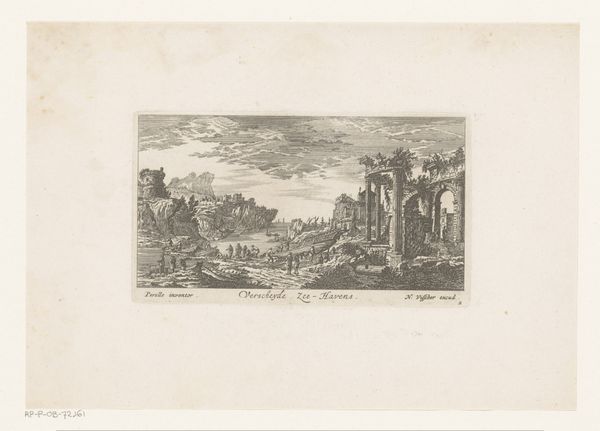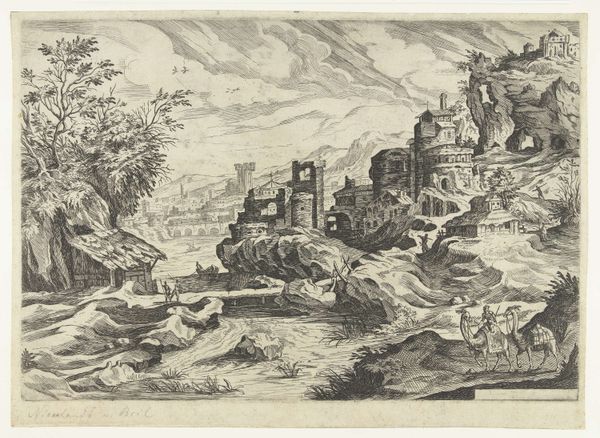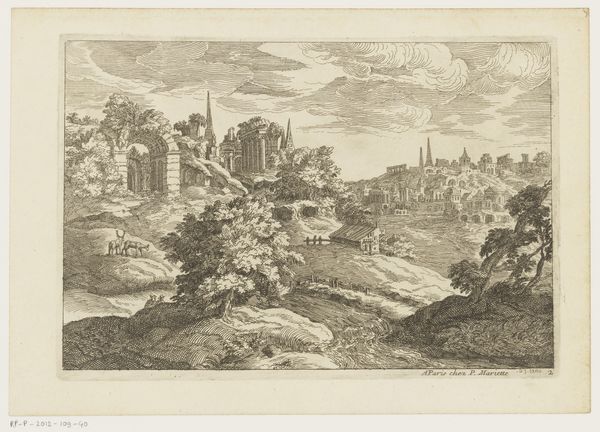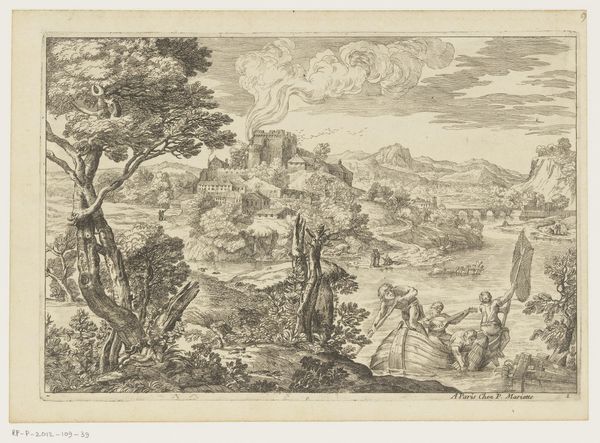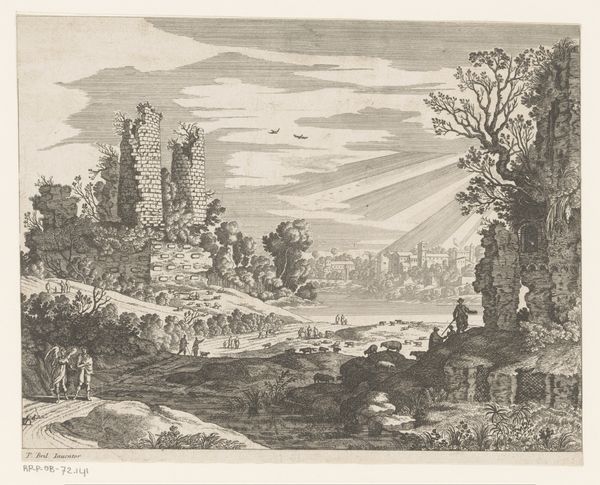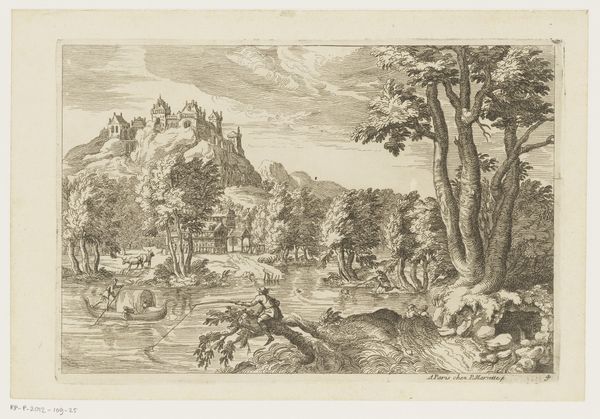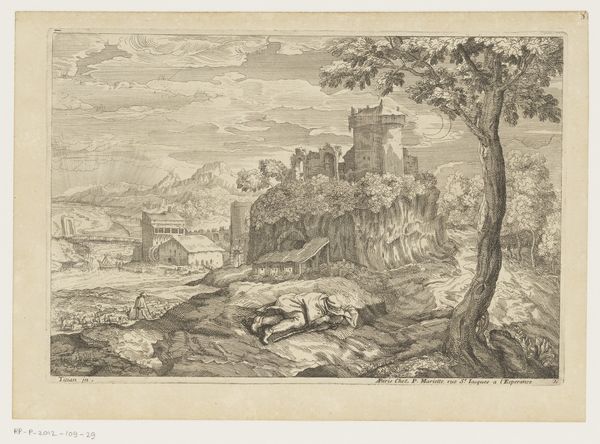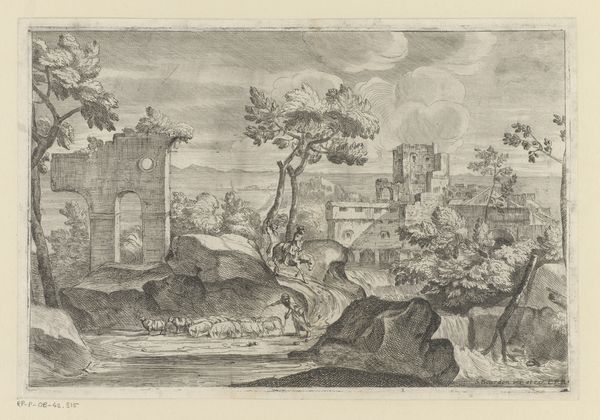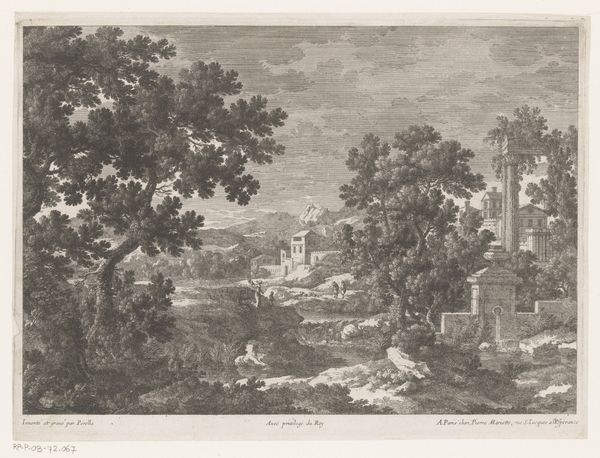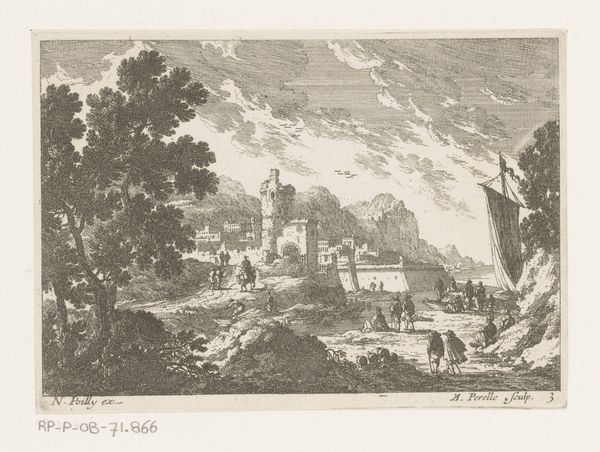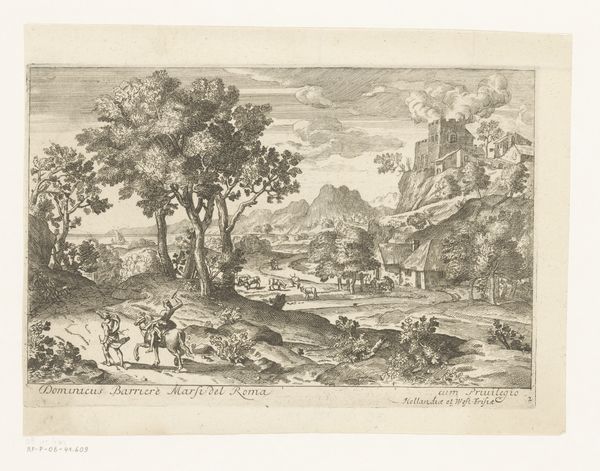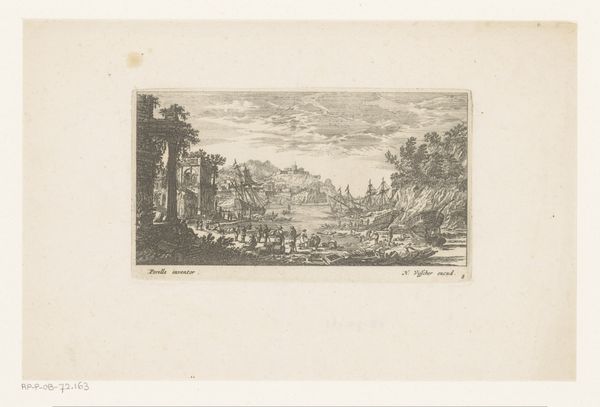
print, etching, engraving
#
baroque
# print
#
etching
#
old engraving style
#
landscape
#
pen work
#
cityscape
#
history-painting
#
engraving
Dimensions: height 100 mm, width 175 mm
Copyright: Rijks Museum: Open Domain
Editor: This print, "Scheepswerf en ruïnes" or "Shipyard and Ruins," made sometime between 1628 and 1679, attributed to Nicolas Perelle, strikes me with its detailed composition, juxtaposing creation and decay. What elements jump out at you? Curator: The formal arrangement is immediately compelling. Consider the strong diagonal that bisects the picture plane, leading from the lower left foreground to the ruined architecture on the right. This division structures our gaze and perhaps suggests a thematic duality as well. Note the precise, almost scientific quality of the lines. What effect does that have, do you think? Editor: It feels very considered, each line contributing to the overall image and maybe adding to this sense of observation rather than romanticisation. Is there a specific meaning you can draw from the scale? The architecture almost dominates. Curator: Indeed. The ruins, rendered with painstaking detail, assume a monumental presence, overshadowing the human figures involved in the shipyard. Observe how the linear perspective guides our eyes to the vanishing point, amplifying the depth and emphasizing the contrast between the temporal activity of shipbuilding and the timelessness of the ruins. This spatial arrangement underscores a hierarchy of values. Editor: So it's the contrast itself that speaks volumes, this carefully orchestrated interplay between temporary creation and enduring remnants. Curator: Precisely. Perelle directs us to consider not merely what is depicted but also how it is visually constructed. By meticulously arranging line, form, and space, Perelle compels us to contemplate the passage of time, and what that means to different subject matter, perhaps as an inherent attribute of both shipbuilding and civilization itself. Editor: It’s fascinating to see how much can be gleaned just by closely observing the formal elements. I’ll certainly look more closely at composition in the future. Curator: Agreed. These elements and the theoretical grounding they create give us new dimensions to consider in representational work.
Comments
No comments
Be the first to comment and join the conversation on the ultimate creative platform.

